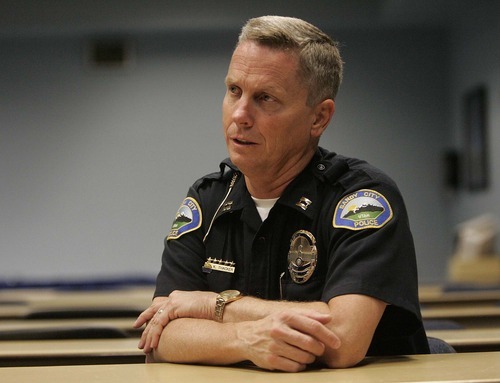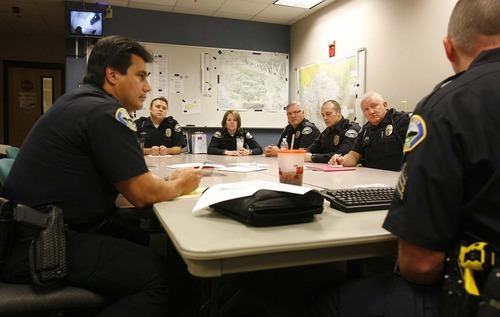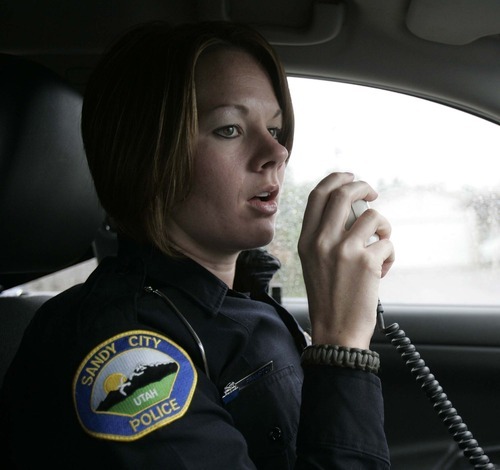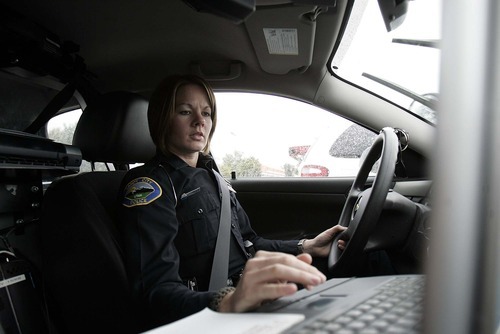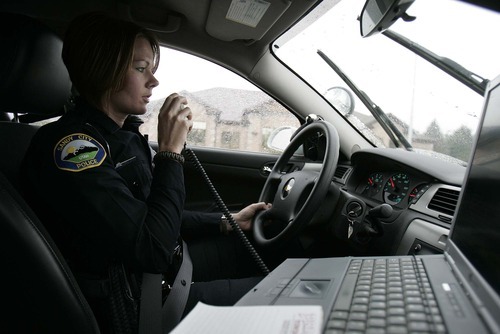This is an archived article that was published on sltrib.com in 2011, and information in the article may be outdated. It is provided only for personal research purposes and may not be reprinted.
To see the change in crime statistics for your city or county, visit http://bit.ly/UtahCrime.
Despite the spectre of a bad economy and cuts to police and sheriff department budgets across the state, serious crime rates dropped in Utah — again.
Utah recorded a 2 percent decline in violent crime in 2010 compared with the previous year, according to recently released FBI data. Property crime declined 4.2 percent.
However, in a contrasting numerical trend, Utah cities with at least 100,000 residents — Salt Lake City, West Valley City, Provo and West Jordan — followed the property crime decline yet saw an increase in violent crimes.
The fifth most populous city with 95,000 residents, Sandy, had a decline in both types of crime.
Sandy police Capt. Kevin Thacker credited a troop of officers who are assigned to identify problem areas, such as a neighborhood that has had a rash of burglaries, then focus on the area.
"They'll go out and just stop every car that moves for a few nights," Thacker said.
Sandy police, Thacker said, also have volunteers who check on homes whose owners have left for vacation or businesses that have previously been burglarized. The volunteers drive marked cars and wear uniforms but are prohibited from carrying firearms.
Crime in Utah, in both whole numbers and as rates of the population, has been declining since the late 1990s. Factors contributing to lower crime rates have puzzled and intrigued academics for years.
The popular blog Freakonomics.com even recently addressed the fact that crime and violence in the United States is at historic lows. The blog authors cited high prison population, the fall of crack cocaine markets and the legalizing of abortion in the 1970s as factors.
Utah has about 6,800 people sentenced to prison. The state has added about 300 inmates just since 2008.
Tooele County Sheriff Frank Park believes technology has helped peace officers become more efficient. Laptop computers in patrol cars help officers reach 911 callers, look up criminal information and receive instant messages from supervisors. Even nonlethal, if sometimes controversial, weapons like bean bag rounds and Tasers can subdue a suspect more efficiently than an old-fashioned fist fight.
Technology has "made our job a little easier, and we're able to do more with the time we have," Park said.
The FBI data also show how Utah law enforcement is coping with lower tax revenues that have forced local governments to cut spending. While the number of police officers in Utah increased slightly in 2010, police and sheriff departments eliminated 928 civilian jobs in 2010. That was 30 percent of the civilian workforce that does everything from answering phones to collecting evidence at crime scenes for Utah law enforcement.
Park said his county has had a hiring freeze and he needs approval from the County Commission before filling a vacant position.
"Sometimes it's just a tougher argument to say the secretary position is that vital versus the patrol person," Park said.
The FBI, which tracks felony level offenses and counts only the most serious offense during a crime episode, reported violent crime in the United States declined 6 percent in 2010 and property crime declined 2.7 percent. Utah's three most populous counties didn't follow all the national or state trends.
Violent crime in Salt Lake County increased by 1.8 percent, but property crime dropped by 9.6 percent, according to a Tribune tabulation of data reported by city police departments there as well as the Unified Police Department.
A similar tabulation showed Utah County also had an increase in violent crime and a decrease in property crime. Violent crime was virtually unchanged in Davis County, but property crime jumped 6.2 percent.
While crime may be down, Park said police remain busy. In Tooele County, like many areas around the state, the number of citizens calling police for help rises almost every year.
"It honestly feels like the job's getting much more detailed," Park said. "It seems like it's a little busier."
ncarlisle@sltrib.com
Twitter: @natecarlisle


